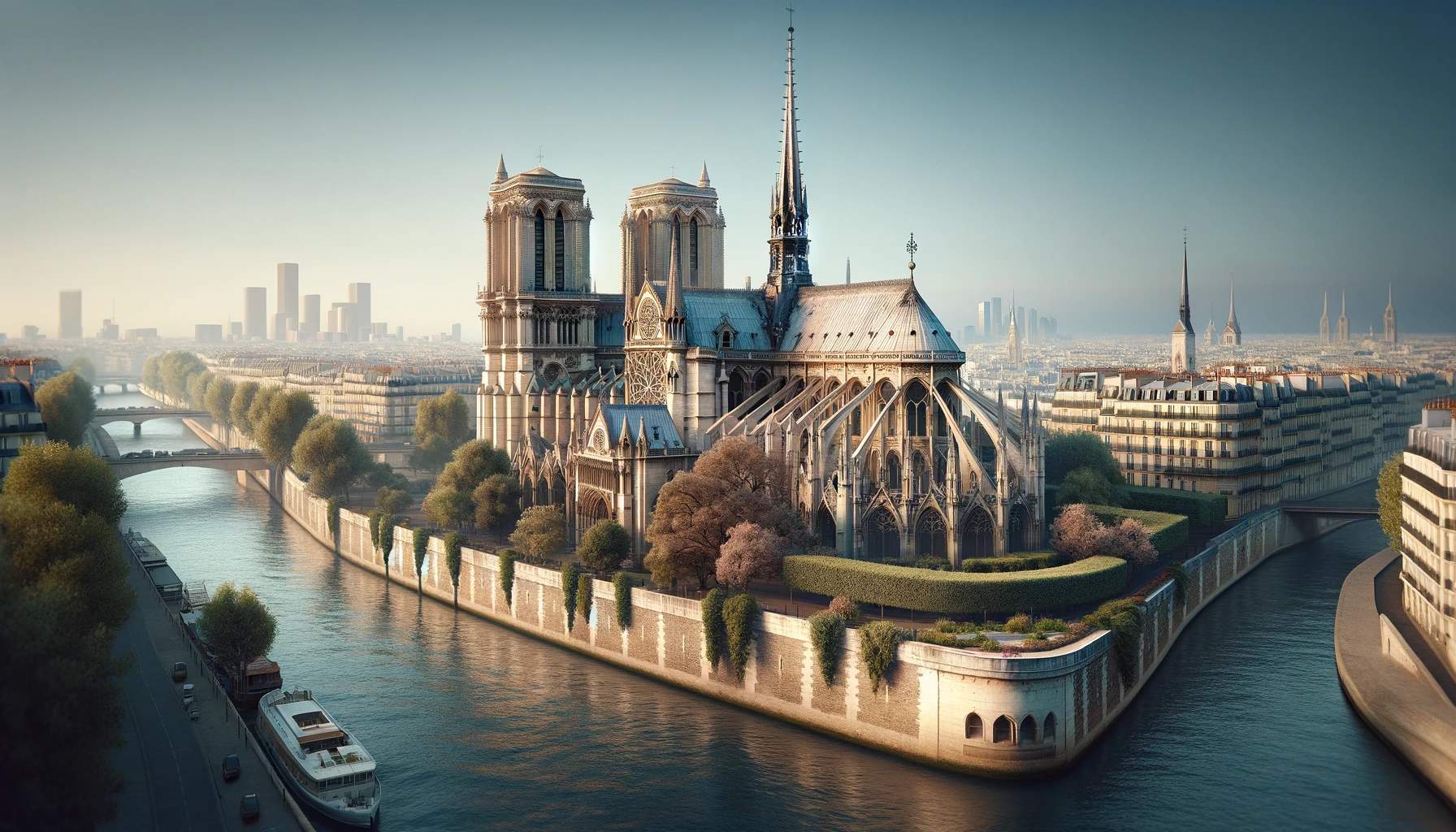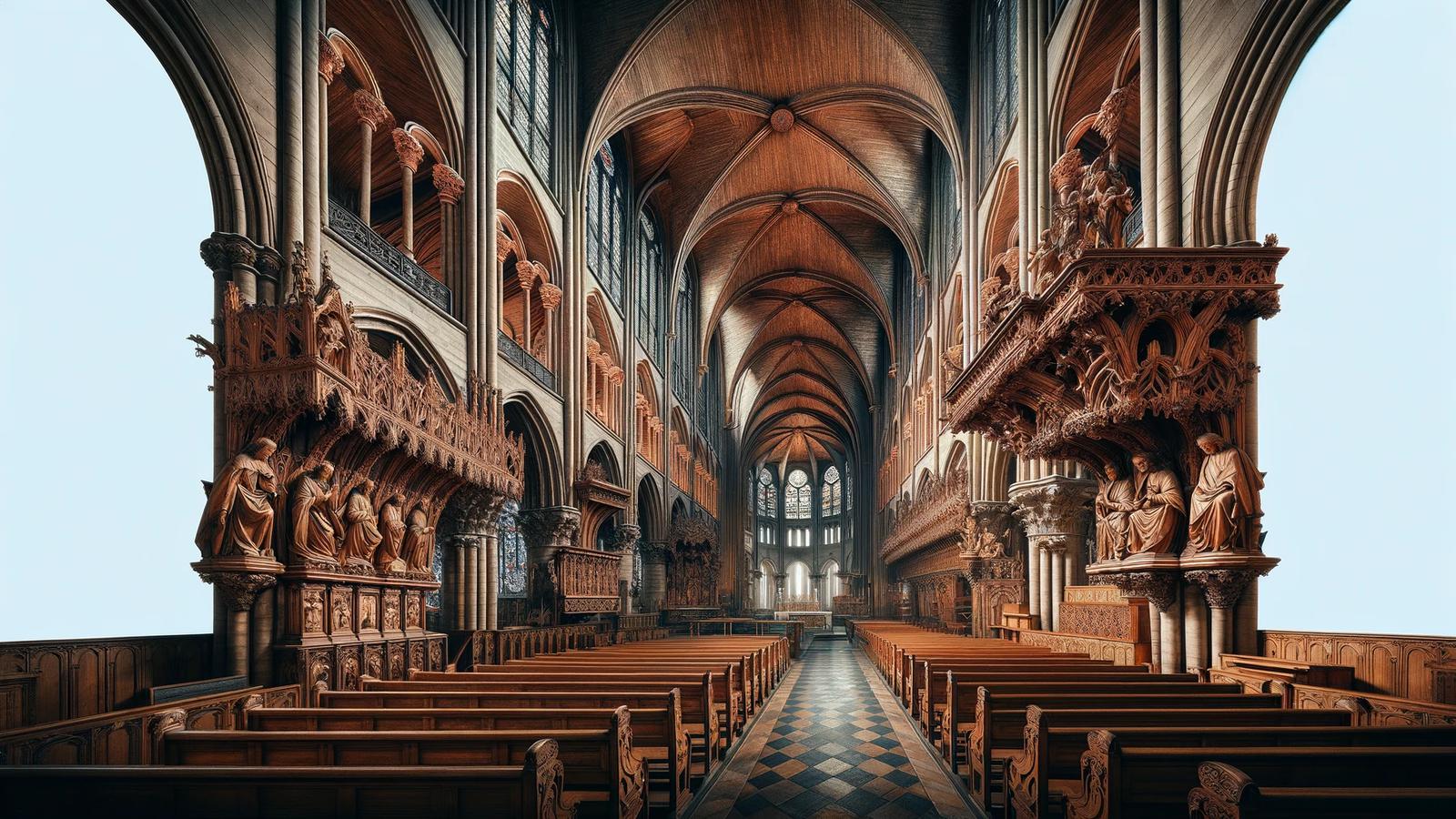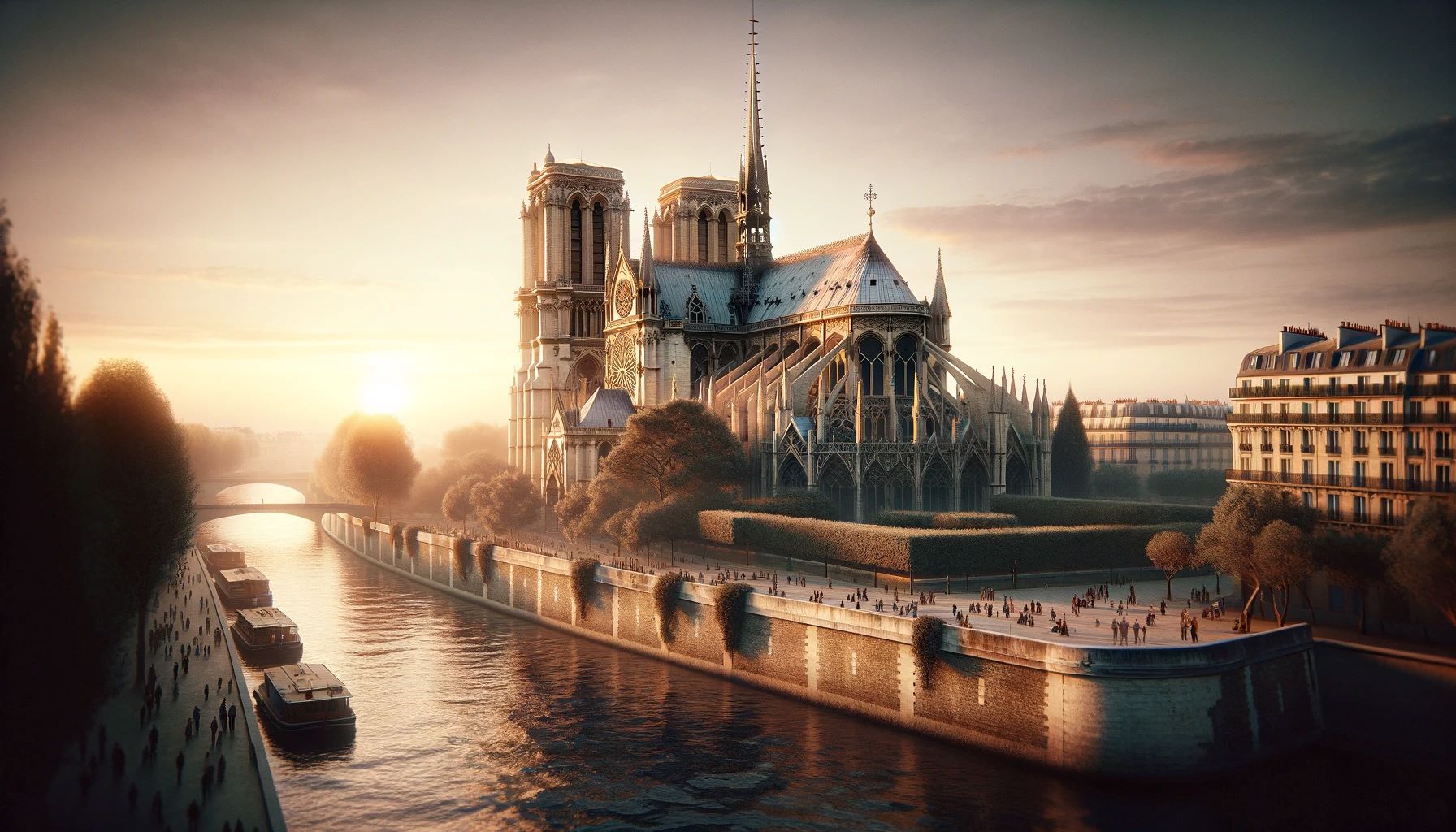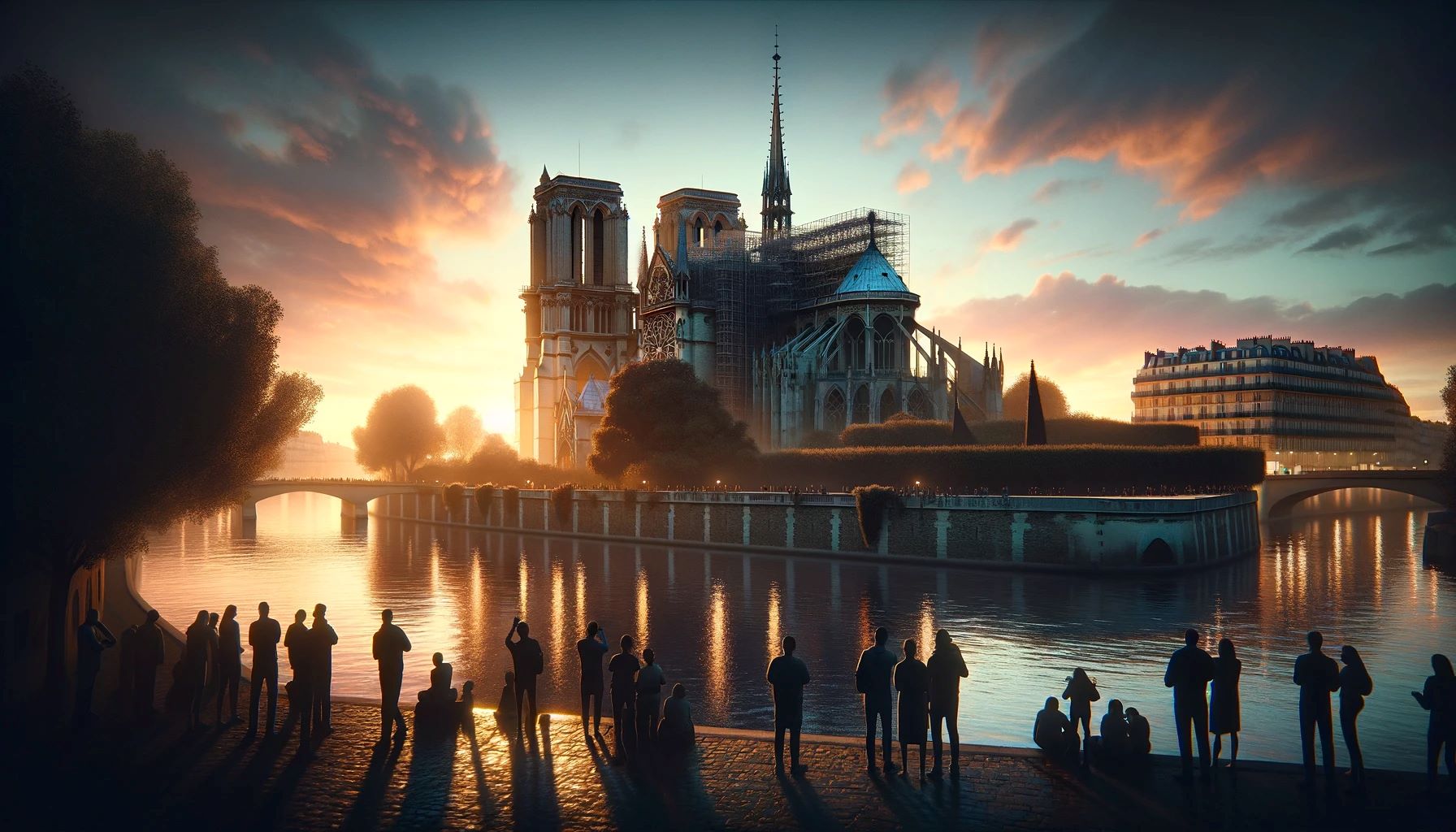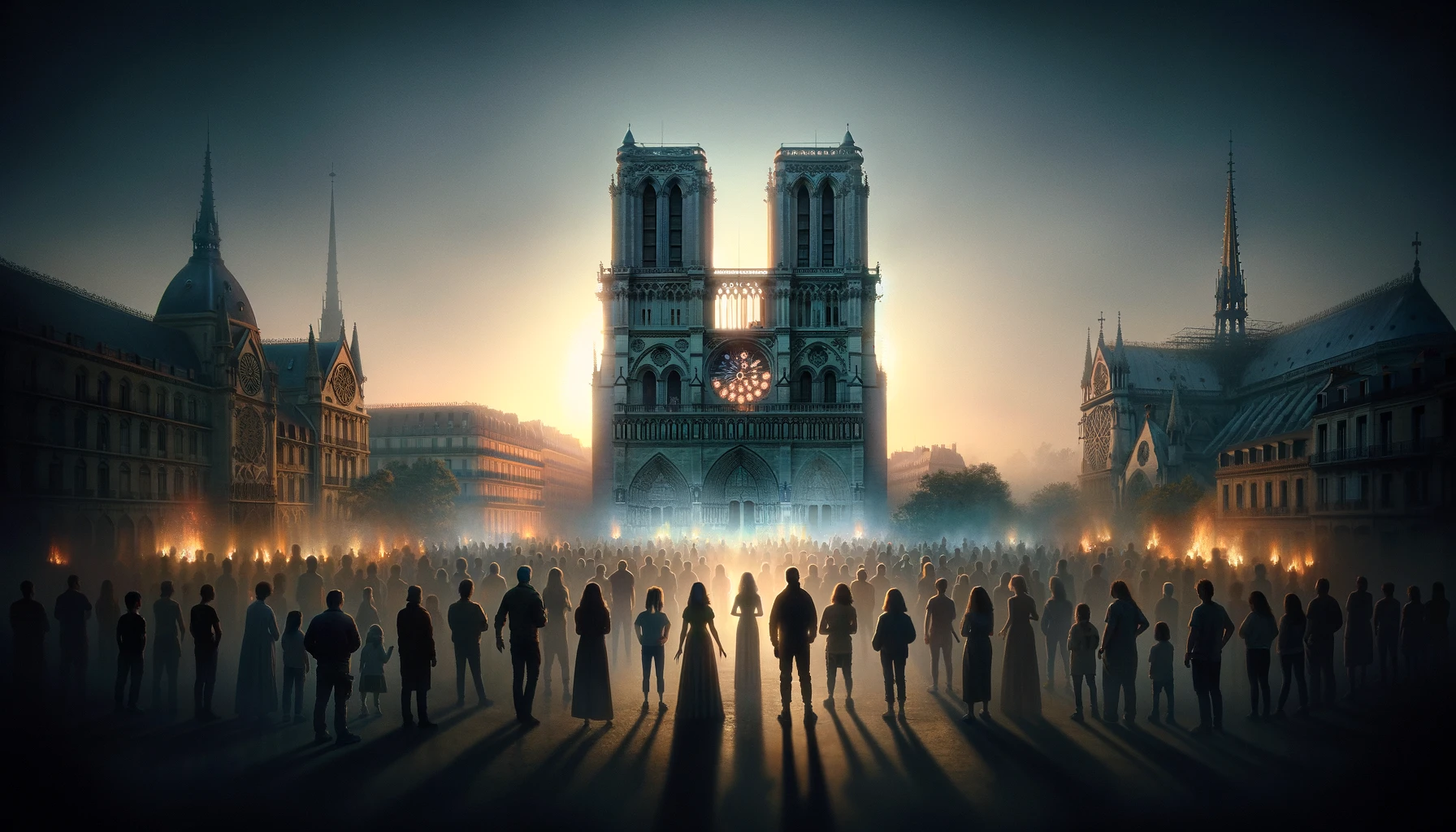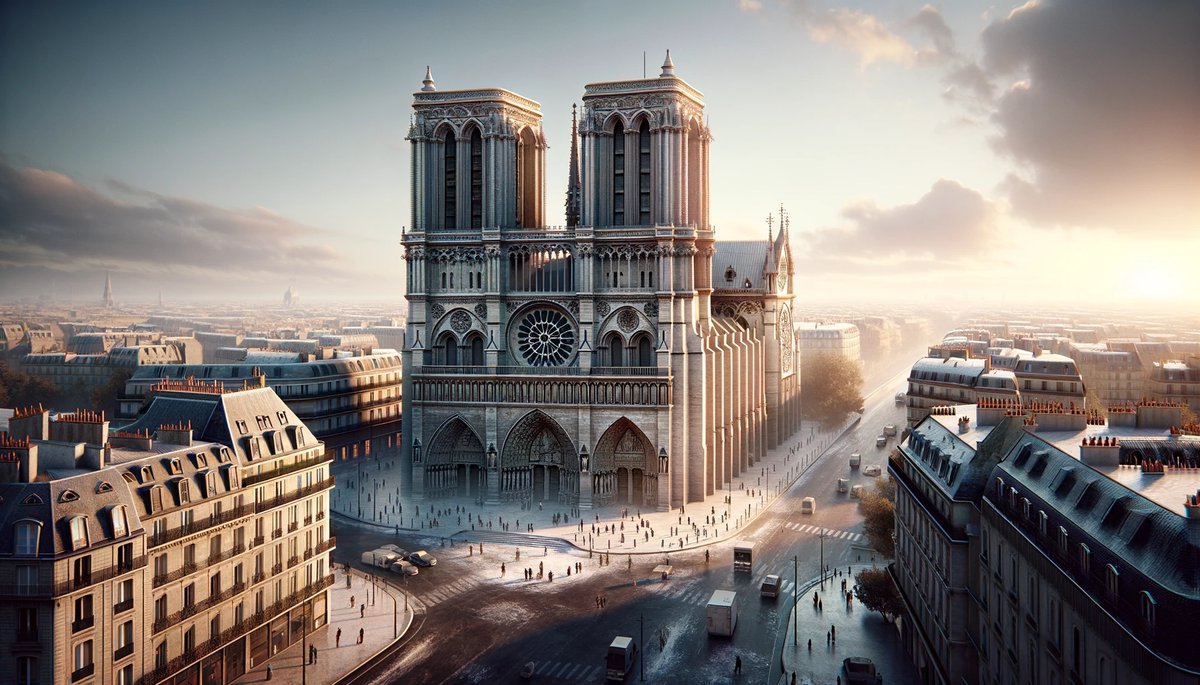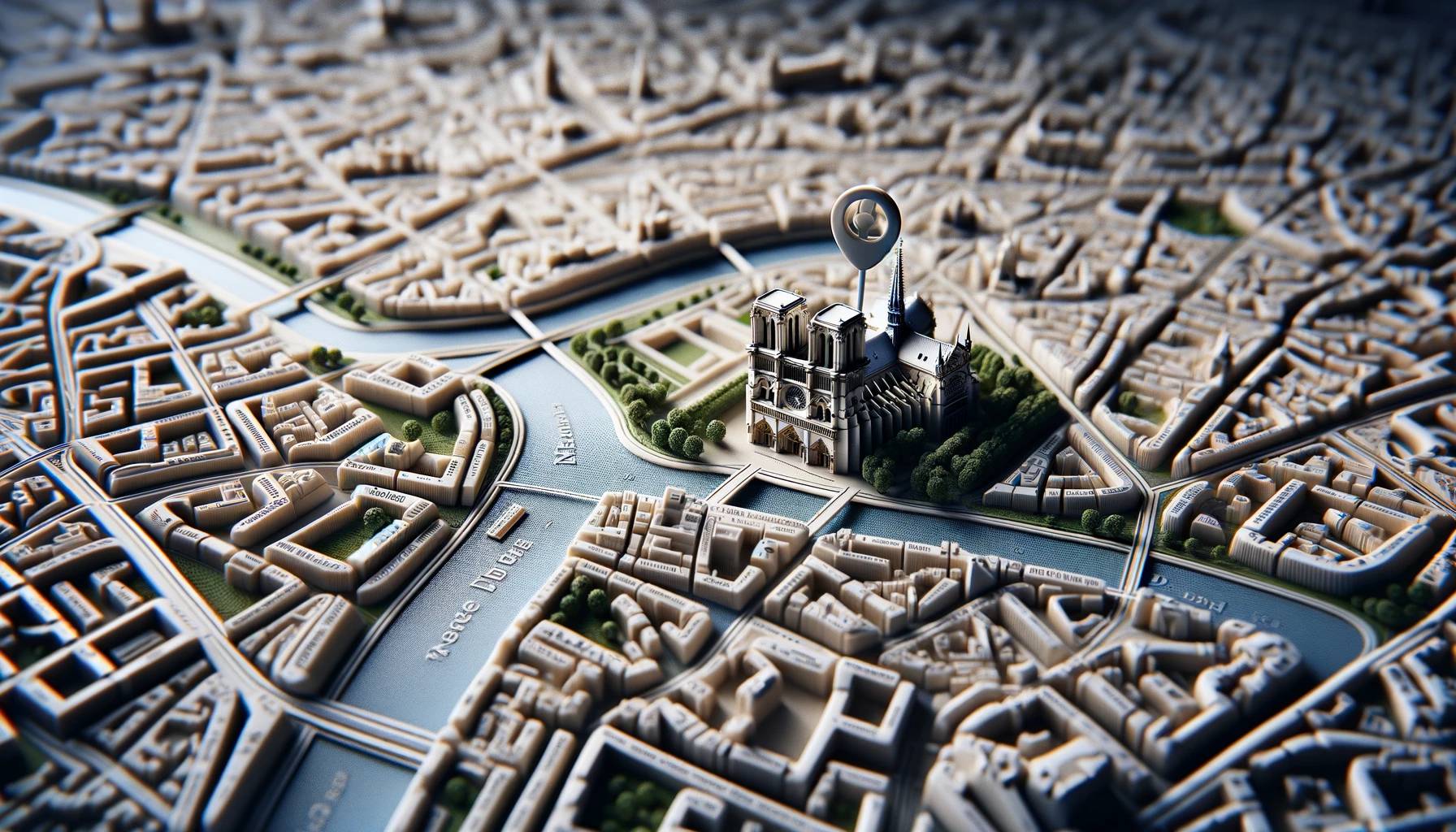Home>Arts and Culture>What Is The Status Of The Notre Dame Cathedral
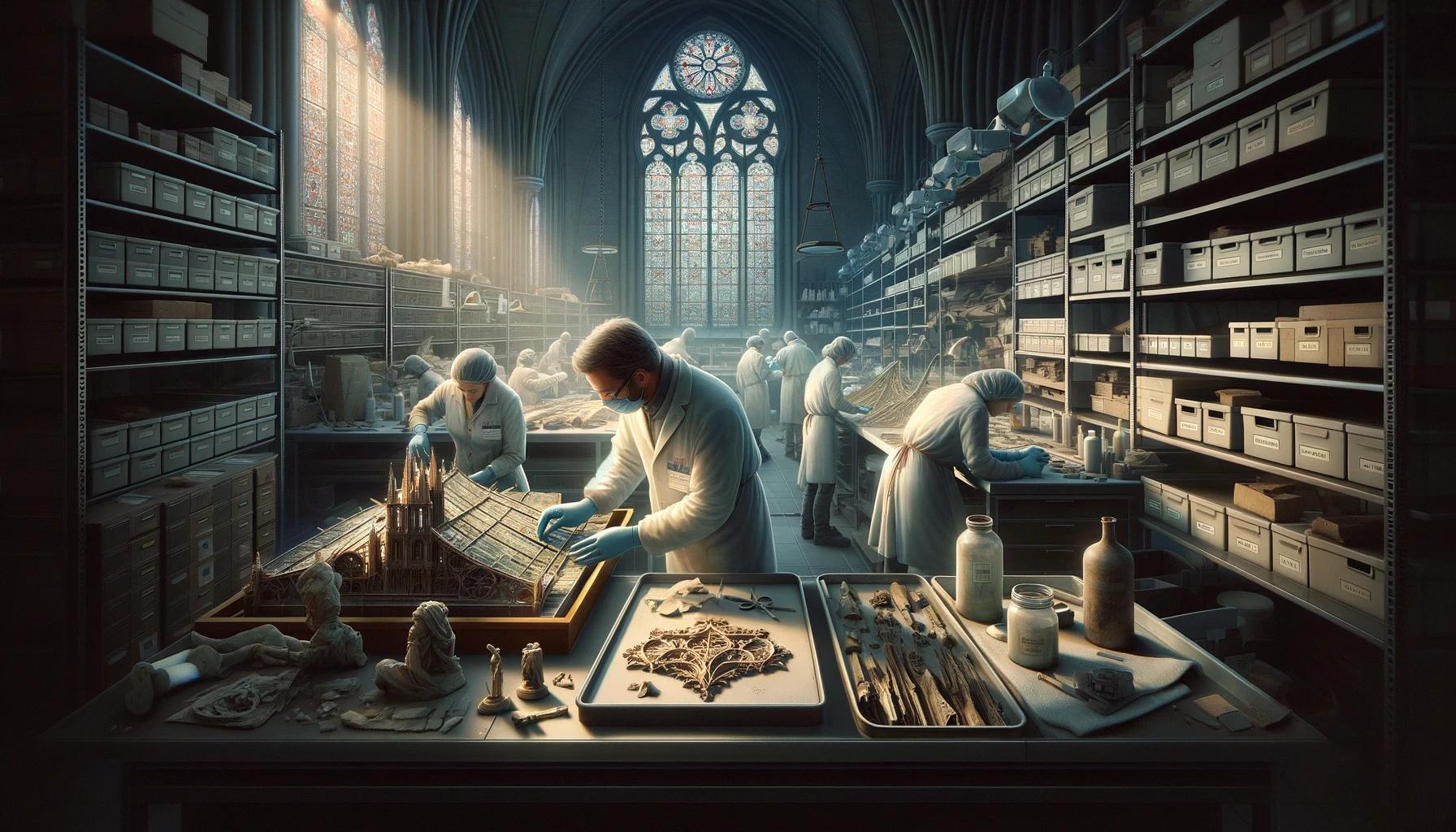

Arts and Culture
What Is The Status Of The Notre Dame Cathedral
Published: February 15, 2024
Ericka Andersen, an editor at Christian.net, expertly merges digital strategy with content creation, focusing on faith and societal issues. Her communication skills enhance the platform's engaging narratives, fostering meaningful dialogue on belief's impact on society.
Discover the latest updates on the Notre Dame Cathedral and its restoration efforts. Explore the historical significance and cultural impact of this iconic landmark in the arts and culture world.
(Many of the links in this article redirect to a specific reviewed product. Your purchase of these products through affiliate links helps to generate commission for Christian.net, at no extra cost. Learn more)
Table of Contents
Introduction
The Notre Dame Cathedral, a timeless symbol of Paris, has long stood as a testament to the ingenuity and artistry of human civilization. This architectural masterpiece, with its awe-inspiring facade and rich historical significance, has drawn countless visitors from around the globe, captivating them with its grandeur and spiritual resonance.
The cathedral, dedicated to the Virgin Mary, has been a focal point of Parisian life for over 850 years, witnessing the ebb and flow of history and serving as a silent witness to the city's evolution. Its construction, which began in 1163 and was completed in 1345, represents a remarkable feat of medieval engineering and craftsmanship. The iconic twin towers, soaring buttresses, and intricate rose windows are testaments to the skill and dedication of the artisans who brought this vision to life.
Beyond its architectural splendor, Notre Dame has been a sanctuary for worship, a repository of priceless art and relics, and a cultural touchstone for generations. Its significance extends far beyond the boundaries of Paris, resonating with people of diverse backgrounds and beliefs, and serving as a unifying symbol of human achievement and spiritual devotion.
The devastating fire that engulfed Notre Dame on April 15, 2019, sent shockwaves around the world, evoking a profound sense of loss and disbelief. The sight of the cathedral's spire collapsing in flames was a heart-wrenching moment that reverberated across continents, underscoring the cathedral's global significance and the deep emotional connection it holds for people worldwide.
In the wake of this tragedy, an outpouring of support and solidarity emerged, as individuals, organizations, and governments rallied to pledge their commitment to the cathedral's restoration. The fire, while a devastating blow, also sparked a renewed sense of determination to preserve this cultural treasure for future generations.
As the world continues to monitor the progress of Notre Dame's restoration, the cathedral remains a symbol of resilience and hope, embodying the enduring spirit of human creativity and perseverance. The journey toward rebuilding Notre Dame is not merely a physical endeavor but a testament to the enduring legacy of this iconic monument and its profound impact on the collective human experience.
History of Notre Dame Cathedral
The history of Notre Dame Cathedral is a tapestry woven with the threads of time, craftsmanship, and cultural significance. Its origins can be traced back to the 12th century when Bishop Maurice de Sully envisioned a grand cathedral that would stand as a testament to the glory of God and the power of the Church. Construction commenced in 1163, under the reign of King Louis VII, and continued for over a century, culminating in the completion of this architectural marvel in 1345.
The cathedral's design reflects the transition from Romanesque to Gothic architecture, showcasing the innovative use of flying buttresses, ribbed vaults, and soaring spires. The iconic twin towers, reaching skyward with a height of 69 meters, have become synonymous with the Parisian skyline, casting their majestic silhouette against the horizon.
Notre Dame's interior is a treasure trove of artistic and religious significance. The three stunning rose windows, dating back to the 13th century, bathe the nave in a kaleidoscope of colored light, while the intricately carved choir stalls and the majestic organ add to the cathedral's allure. The cathedral also houses a collection of priceless relics, including the Crown of Thorns and a fragment of the True Cross, drawing pilgrims and art enthusiasts alike.
Throughout its long history, Notre Dame has borne witness to pivotal moments in French history. It was the site of coronations, royal weddings, and significant religious ceremonies, serving as a focal point for both spiritual and secular events. The cathedral's enduring presence has weathered revolutions, wars, and the passage of time, standing as a symbol of resilience and continuity amidst the ever-changing currents of history.
Notre Dame Cathedral's cultural significance extends far beyond its architectural grandeur. It has inspired countless works of art, literature, and music, capturing the imagination of artists and writers across the centuries. Victor Hugo's novel "The Hunchback of Notre-Dame" brought the cathedral to the forefront of popular imagination, igniting public interest in its preservation and historical importance.
As a testament to human ingenuity and devotion, Notre Dame Cathedral stands as a living chronicle of Parisian heritage and the enduring legacy of medieval craftsmanship. Its history is a testament to the enduring power of architectural innovation, spiritual devotion, and the timeless resonance of cultural landmarks.
The Fire and Its Impact
On April 15, 2019, the world watched in horror as flames engulfed the iconic Notre Dame Cathedral, casting a pall of disbelief and sorrow over the global community. The fire, which broke out in the attic of the cathedral, quickly spread, consuming the wooden framework that supported the roof and spire. As the blaze raged, onlookers gathered along the banks of the Seine, their hearts heavy with the realization that a cherished symbol of human achievement was under threat.
The sight of Notre Dame's spire collapsing in a fiery inferno was a gut-wrenching moment that reverberated across continents. The cathedral, with its centuries-old history and cultural significance, stood as a testament to the resilience of the human spirit, and its vulnerability to the ravages of time and nature struck a chord with people around the world.
The impact of the fire extended far beyond the physical damage inflicted upon the cathedral. It sparked a collective sense of mourning and introspection, prompting individuals to reflect on the fragility of cultural heritage and the imperative of preservation. The outpouring of grief and solidarity underscored Notre Dame's profound emotional resonance, transcending geographical boundaries and cultural differences.
In the immediate aftermath of the fire, a sense of urgency and determination emerged, as public figures, philanthropists, and preservationists rallied to pledge their support for the cathedral's restoration. The global response to the tragedy was a testament to Notre Dame's enduring significance as a symbol of human achievement and cultural heritage.
The fire also reignited discussions about the importance of safeguarding historical landmarks and the challenges of balancing preservation with modern-day demands. It prompted a reevaluation of safety measures for heritage sites and sparked conversations about the role of technology in protecting and preserving architectural treasures for future generations.
As the flames were extinguished and the smoke cleared, the world turned its attention to the daunting task of rebuilding Notre Dame. The fire, while a devastating blow, served as a catalyst for renewed commitment to the cathedral's restoration, symbolizing the resilience and determination of the human spirit in the face of adversity.
The impact of the fire on Notre Dame Cathedral transcended physical damage, serving as a poignant reminder of the enduring power of cultural heritage and the collective responsibility to safeguard it for generations to come.
Restoration Efforts
Following the devastating fire that ravaged Notre Dame Cathedral, a monumental effort to restore this iconic landmark was set into motion. The immediate aftermath of the blaze saw an outpouring of support from individuals, organizations, and governments, all united in their commitment to resurrecting the cathedral from the ashes.
One of the most remarkable aspects of the restoration efforts was the swift mobilization of resources and expertise. Within days of the fire, pledges of financial support poured in from across the globe, with donations totaling hundreds of millions of euros. These contributions, coupled with the unwavering dedication of skilled craftsmen, engineers, and preservation experts, formed the foundation of the restoration endeavor.
Central to the restoration efforts was the meticulous assessment of the damage inflicted upon the cathedral. Teams of architects, archaeologists, and structural engineers meticulously surveyed the site, documenting the extent of the destruction and formulating a comprehensive plan for the cathedral's rebirth. Cutting-edge technology, including 3D imaging and laser scanning, was employed to create detailed digital models of the cathedral, aiding in the precise reconstruction of its intricate features.
The restoration process also entailed the delicate task of salvaging and preserving the cathedral's surviving architectural elements and priceless artifacts. Every fragment of stone, stained glass window, and historical artifact was cataloged, carefully removed, and safeguarded for future restoration. This painstaking endeavor underscored the commitment to honoring Notre Dame's heritage and ensuring that its timeless legacy would endure.
As the restoration efforts progressed, a spirit of innovation and collaboration emerged, as experts from diverse fields pooled their knowledge and resources to overcome the complex challenges posed by the cathedral's reconstruction. The integration of traditional craftsmanship with modern techniques became a hallmark of the restoration, exemplifying a harmonious blend of heritage preservation and technological advancement.
The restoration of Notre Dame Cathedral stands as a testament to the resilience and determination of the human spirit. It embodies the unwavering commitment to preserving cultural heritage and honoring the legacy of this revered monument. The restoration efforts, marked by a global outpouring of support and a convergence of expertise, serve as a poignant reminder of the enduring significance of Notre Dame and the collective responsibility to safeguard it for future generations.
Current Status and Future Plans
The current status of Notre Dame Cathedral reflects a pivotal juncture in its journey of restoration and renewal. Since the devastating fire of April 2019, significant strides have been made in stabilizing the structure and laying the groundwork for the cathedral's resurgence. The initial phase of securing the site and assessing the extent of the damage has paved the way for a comprehensive restoration plan that embodies a harmonious blend of tradition and innovation.
One of the primary focuses of the current status involves the meticulous process of stabilizing the cathedral's structure and safeguarding it from further deterioration. This critical phase entails reinforcing weakened masonry, securing the flying buttresses, and fortifying the iconic towers to ensure their structural integrity. The delicate task of removing fire-damaged elements while preserving the cathedral's historical fabric has been approached with the utmost care and precision, underscoring the commitment to honoring Notre Dame's rich heritage.
Looking ahead, the future plans for Notre Dame Cathedral encompass a multifaceted approach that encompasses architectural reconstruction, artistic preservation, and technological integration. The restoration efforts will draw upon the expertise of master craftsmen, architects, and conservationists to meticulously recreate the cathedral's intricate features, paying homage to its original splendor while incorporating modern advancements in materials and techniques.
The integration of innovative technologies, such as 3D modeling and digital mapping, will play a pivotal role in guiding the restoration process, enabling a precise reconstruction of Notre Dame's architectural elements. This synergy of traditional craftsmanship with contemporary tools exemplifies a forward-looking vision that seeks to ensure the cathedral's resilience for centuries to come.
Furthermore, the future plans for Notre Dame extend beyond the physical reconstruction of the cathedral, encompassing initiatives to enrich the visitor experience and engage a global audience. Educational programs, interactive exhibits, and digital platforms will be leveraged to illuminate Notre Dame's historical and cultural significance, fostering a deeper appreciation for this enduring symbol of human achievement.
As the restoration efforts continue to unfold, Notre Dame Cathedral stands as a beacon of hope and resilience, embodying the unwavering spirit of preservation and renewal. The journey toward revitalizing this iconic monument is a testament to the collective dedication to safeguarding cultural heritage and honoring the legacy of Notre Dame for future generations.
Conclusion
In conclusion, the journey of Notre Dame Cathedral, from the ravages of the 2019 fire to the ongoing restoration efforts, encapsulates a profound narrative of resilience, unity, and unwavering commitment to preserving cultural heritage. The cathedral, with its centuries-old history and global significance, has emerged as a symbol of human ingenuity and determination in the face of adversity.
The devastating fire that engulfed Notre Dame served as a poignant reminder of the fragility of cultural landmarks and the imperative of safeguarding them for future generations. The outpouring of support and solidarity that followed the tragedy underscored the cathedral's profound emotional resonance, transcending geographical boundaries and cultural differences. It ignited a collective sense of responsibility to ensure that Notre Dame's legacy endures as a testament to human achievement and artistic expression.
The restoration efforts, marked by a convergence of expertise and a global outpouring of support, exemplify the indomitable spirit of preservation and renewal. The meticulous assessment of the damage, the salvaging of architectural elements, and the integration of traditional craftsmanship with modern techniques underscore the commitment to honoring Notre Dame's heritage while embracing innovation.
As Notre Dame Cathedral stands at a pivotal juncture in its journey of renewal, the future holds the promise of a revitalized monument that seamlessly blends its rich historical legacy with contemporary advancements. The cathedral's resurgence embodies a harmonious fusion of tradition and innovation, ensuring that its timeless splendor continues to inspire and captivate future generations.
The journey toward rebuilding Notre Dame is not merely a physical endeavor but a testament to the enduring legacy of this iconic monument and its profound impact on the collective human experience. It serves as a testament to the enduring power of cultural heritage and the collective responsibility to safeguard it for generations to come.
As the restoration efforts continue to unfold, Notre Dame Cathedral stands as a beacon of hope and resilience, embodying the unwavering spirit of preservation and renewal. The journey toward revitalizing this iconic monument is a testament to the collective dedication to safeguarding cultural heritage and honoring the legacy of Notre Dame for future generations.
